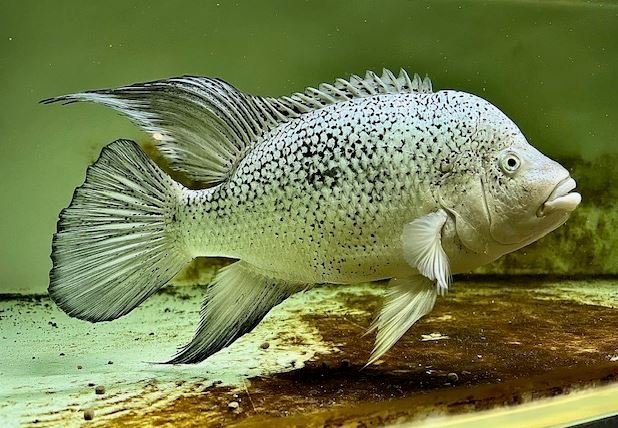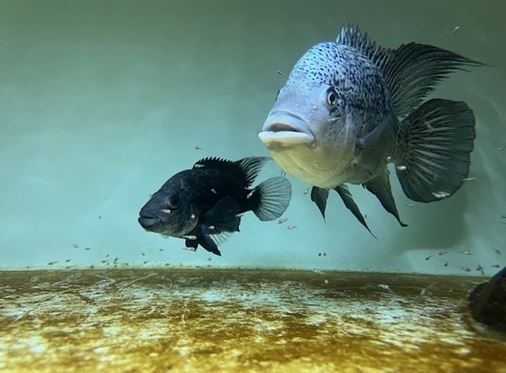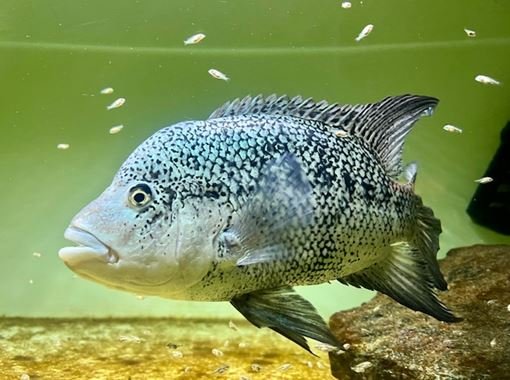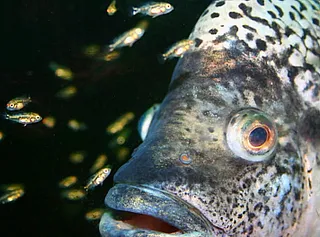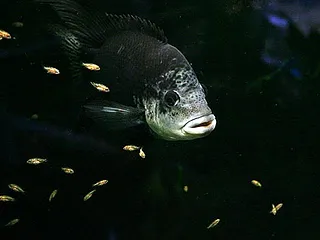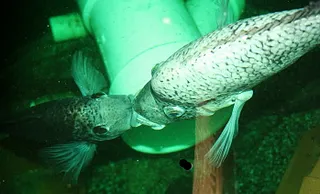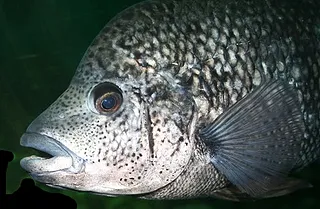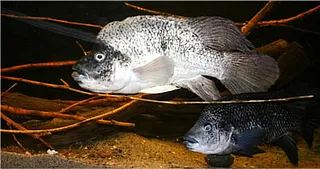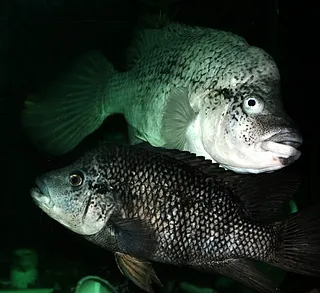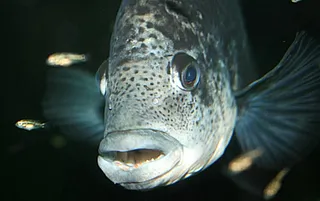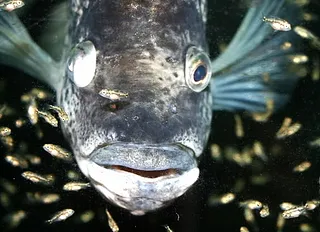G'day
Just a quick summary of my journey with the Black Nasty cichlid over the last 12 months. From the top, I am no expert with this fish having only kept them 12 months. These are just my own observations and experiences to date.
12 months ago, I bought 3x 2" juveniles. All 3 developed a serious nuchal hump very early on - something that none of them showed later on, which I have never seen in a cichlid prior, normally this develops later in life and is associated with spawning. The humps on my now males are fairly unremarkable at ~12".
The three originals were grown out with a group of Blockhead Cichlids and other various bits and pieces, they never showed any remarkable aggression outside what you would expect from any other CA cichlid. 2 excluded the third and went after it - assuming the two that coexisted were a pair and the 3rd was an excess male, I sold the 3rd and kept the 'pair'. These two ended up both being males that happily coexisted until recently when I split them apart (for breeding purposes, they still never showed aggression towards each other). Happily getting along in a 70gal at 10-12"ea. I thought this to be fairly unusual behaviour for this species - two males of this size peacefully coexisting in a tank that is admittedly on the small side.
In the meantime I had been growing out a small female that I had picked up knowing that I'd like to give spawning crack. I gave each male its own 70, and added the female to the smaller of the two males tanks with the use of a divider. I kept them divided (they could see through the egg crate). I removed the divider after about two weeks, the introduction was totally uneventful, with only minimal signs of aggression between the two to speak of, if anything the female was the aggressor towards the much larger male.
About a week after introduction I added a large flat stone and did a couple of 50% cold water changes, the females vent quickly dropped and the next morning I woke up to a spawn on the glass floor of the aquarium next to the rock I had placed (typical). Even with eggs, the male remains non-aggressive towards me and his mate (thankfully) I have spawned other CA's including Dovii and with the presence of eggs/fry my males would always try break the glass to defend their progeny from me. This male Black Nasty, shows non of that to date. The female is non-aggressive towards her mate, however will go the glass when I get close.
As of the time of writing this the eggs are about 60 hours old. Approximately 15-20% have fungus. The remaining ~80% look like they are developing well and hopefully they will hatch within the next 24 hours. I wasn't expecting anything being a first spawn, so if i can get a batch of fry that will be a great result.
I will upgrade the tanks of the pair and the spare male in the coming months to something larger.
A summary of my keeping notes;
- I have admittedly let their tanks get too cool during the season change 22-23C. They showed no ill effects. I have also kept them at 30C + (as is often recommended). I have noticed little change at either temp. Current spawning temp is 29-30C.
- I have never seen any of the legendary aggression associated with the species, not even close.
- While I have only kept 4 individuals to date, I have lost none to bloat. They have been fed on a 100% diet of ottohime pellets. I have offered cut fish and prawn at times, which they ignore.
- Spawning was fairly uneventful, some general 'cleaning' of the tanks surfaces, with very little shaking or spawning behaviour.
- Males colour change into spawning colours is subtle, darker markings become slightly more prominent and white now shows a blue hue. Females colour change is far more dramatic to a mostly black body with white face.
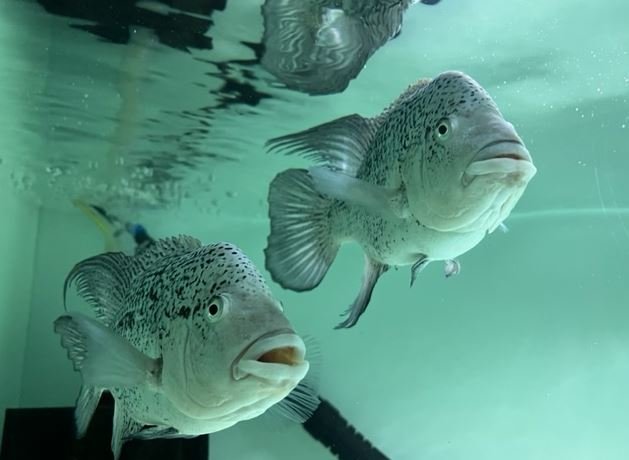
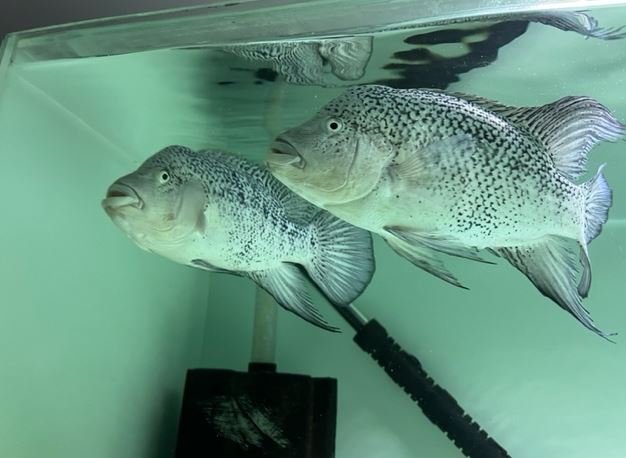
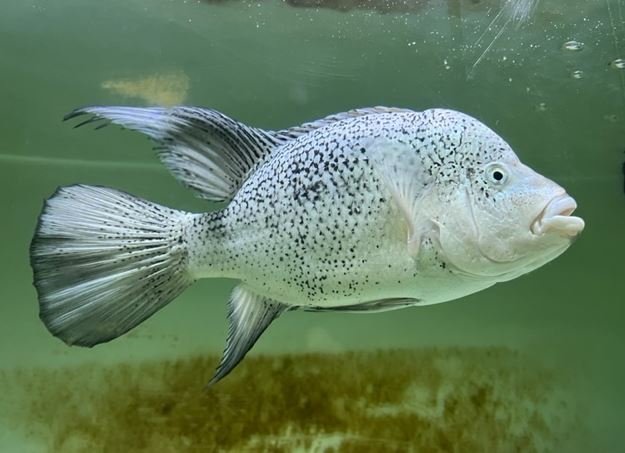
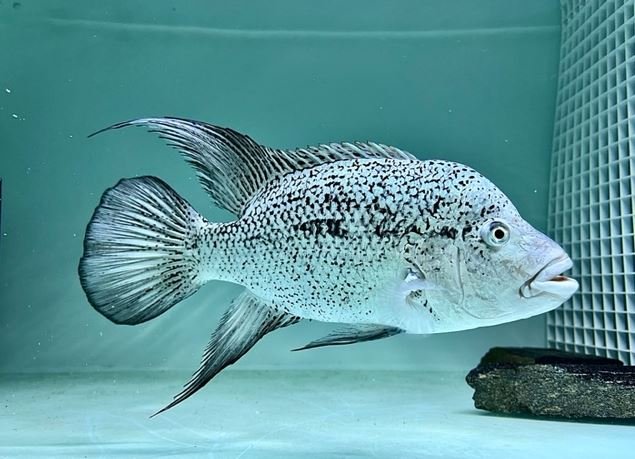
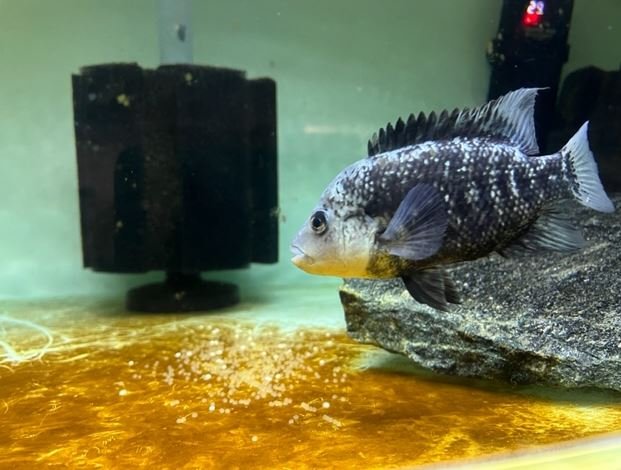
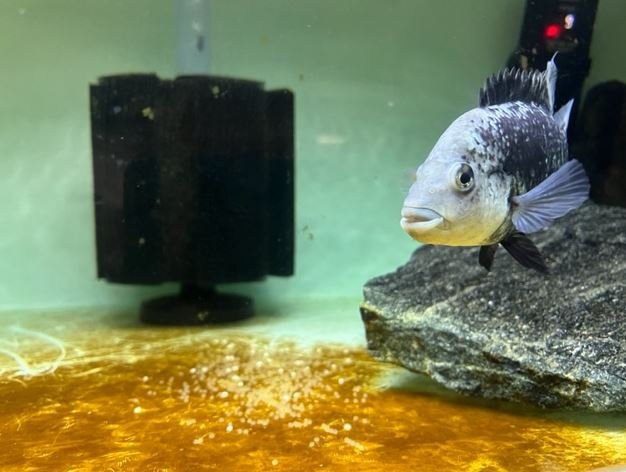
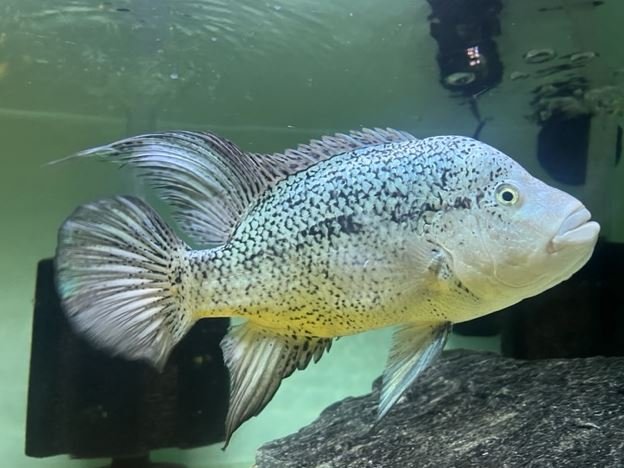
Just a quick summary of my journey with the Black Nasty cichlid over the last 12 months. From the top, I am no expert with this fish having only kept them 12 months. These are just my own observations and experiences to date.
12 months ago, I bought 3x 2" juveniles. All 3 developed a serious nuchal hump very early on - something that none of them showed later on, which I have never seen in a cichlid prior, normally this develops later in life and is associated with spawning. The humps on my now males are fairly unremarkable at ~12".
The three originals were grown out with a group of Blockhead Cichlids and other various bits and pieces, they never showed any remarkable aggression outside what you would expect from any other CA cichlid. 2 excluded the third and went after it - assuming the two that coexisted were a pair and the 3rd was an excess male, I sold the 3rd and kept the 'pair'. These two ended up both being males that happily coexisted until recently when I split them apart (for breeding purposes, they still never showed aggression towards each other). Happily getting along in a 70gal at 10-12"ea. I thought this to be fairly unusual behaviour for this species - two males of this size peacefully coexisting in a tank that is admittedly on the small side.
In the meantime I had been growing out a small female that I had picked up knowing that I'd like to give spawning crack. I gave each male its own 70, and added the female to the smaller of the two males tanks with the use of a divider. I kept them divided (they could see through the egg crate). I removed the divider after about two weeks, the introduction was totally uneventful, with only minimal signs of aggression between the two to speak of, if anything the female was the aggressor towards the much larger male.
About a week after introduction I added a large flat stone and did a couple of 50% cold water changes, the females vent quickly dropped and the next morning I woke up to a spawn on the glass floor of the aquarium next to the rock I had placed (typical). Even with eggs, the male remains non-aggressive towards me and his mate (thankfully) I have spawned other CA's including Dovii and with the presence of eggs/fry my males would always try break the glass to defend their progeny from me. This male Black Nasty, shows non of that to date. The female is non-aggressive towards her mate, however will go the glass when I get close.
As of the time of writing this the eggs are about 60 hours old. Approximately 15-20% have fungus. The remaining ~80% look like they are developing well and hopefully they will hatch within the next 24 hours. I wasn't expecting anything being a first spawn, so if i can get a batch of fry that will be a great result.
I will upgrade the tanks of the pair and the spare male in the coming months to something larger.
A summary of my keeping notes;
- I have admittedly let their tanks get too cool during the season change 22-23C. They showed no ill effects. I have also kept them at 30C + (as is often recommended). I have noticed little change at either temp. Current spawning temp is 29-30C.
- I have never seen any of the legendary aggression associated with the species, not even close.
- While I have only kept 4 individuals to date, I have lost none to bloat. They have been fed on a 100% diet of ottohime pellets. I have offered cut fish and prawn at times, which they ignore.
- Spawning was fairly uneventful, some general 'cleaning' of the tanks surfaces, with very little shaking or spawning behaviour.
- Males colour change into spawning colours is subtle, darker markings become slightly more prominent and white now shows a blue hue. Females colour change is far more dramatic to a mostly black body with white face.










